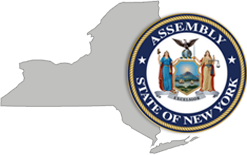Lagging Infrastructure and Inflation are a Massive Threat to New York
Column from Assembly Minority Leader Will Barclay
New York is facing a perfect storm of circumstances severely inhibiting its efforts to modernize its lagging infrastructure. Due to a combination of high inflation and an already long list of resiliency projects needed to restore New York to its place as an economic leader — according to the comptroller’s office, an astonishing 10% of all local bridges in the state are rated “poor” as of last year, and the Reason Foundation’s 27th Annual Highway Report ranks our system at 49th in the nation — strengthening our infrastructure is going to be an uphill battle unless we take some drastic measures to right the ship.
The Assembly Minority Conference has been advocating for investment in infrastructure for years. In 2019, we published our Task Force on Critical Infrastructure and Transportation report that focused on fortifying our roads, bridges and water systems. We continue to push for a greater investment to address shortcomings in these areas. Poor infrastructure is costly to New York drivers who are forced to make expensive repairs to their vehicles due to poor road conditions. In contrast, the governor inexplicably proposed cutting $60 million from the Consolidated Local Street and Highway Improvement Program (CHIPS) during the most recent budget negotiations.
For our part, we called for an increase in CHIPS base aid and for future funding to be tied to the rate of inflation to account for increasing material costs. We also suggested establishing a companion program to CHIPS to offer financial assistance to local governments for drinking, storm and sewer water infrastructure.
One major part of New York’s problem is its sprawling budget that eats up enormous amounts of resources without delivering tangible improvements to our quality of life. For example, New York state has already spent several billion dollars supporting undocumented migrants, and another $2.4 billion is earmarked to do so in the most recently passed spending plan. Unfortunately, there are no long-term plans to sustainably accommodate these migrants, and additional spending will likely be needed to mitigate the crisis. This puts an enormous strain on our finances at a time when we are facing severe infrastructure deficiencies along with myriad other cost-of-living challenges.
The good news is that it is not too late to correct our course and make the necessary adjustments to navigate these economic conditions. For one, we must not fall into the trap of cutting spending in the wrong places. We need to properly balance and distribute our resources. Improving New York’s roads and bridges will be expensive, but it is necessary. Hardening our infrastructure is a precursor to future economic success; without a sturdy and resilient transportation network, our economy simply will not work. While it might seem obvious, we need to make massive adjustments, New York leadership seems confusingly unwilling to commit to what is necessary.

